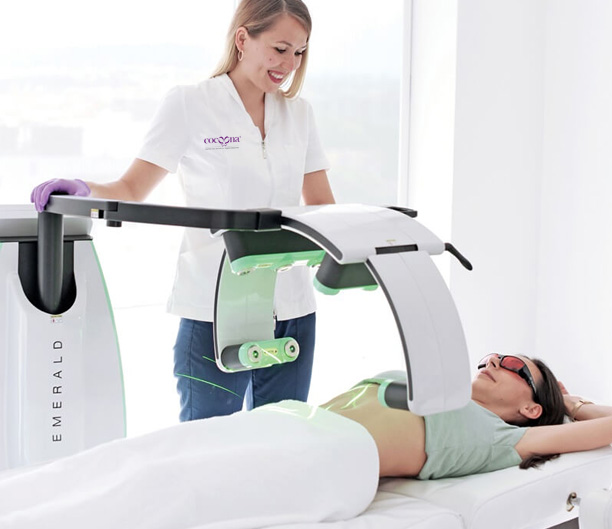Put simply, Non-Thermal Low-Level Laser (NTLLL) delivers energy to the mitochondria of cells. This energy is delivered as photons or light particles, and this process is referred to as electromagnetic energy transfer. The aim of this article is to provide a brief synopsis to help the reader understand electromagnetic waves (EMW) and NTLLL.
Electromagnetic energy is a type of energy that is able to travel at the speed of light, it is characterised as having both electric and magnetic fields.
From humble beginnings more than 100 years ago, EMR has become an important component of modern medicine. There is an urgent need for education and better understanding with respect to its principles and applications.
The application of this energy is not new, Endre Mester at the Semmelweis Medical University in Hungary understood its effect. In 1998, Wilden showed the importance of low-level laser in the delivery of energy. Wilden went on to say, “Depending on its wavelength, electromagnetic radiation in the form of light can stimulate macromolecules and can initiate conformation changes in proteins or can transfer energy to electrons. Low level laser from the red and the near infrared region corresponds well with the characteristic energy and absorption levels of the relevant components of the respiratory chain”. What he was talking about is Non-Thermal Electromagnetic Transfer via Light. NTLLL is a collimated, monochromatic, unidirectional beam of light from the visual light spectrum. The visible spectrum is the portion of the electromagnetic spectrum that is visible to the human eye.

When you take visual light from the electromagnetic radiation spectrum, depth of penetration in terms of NTLLL becomes totally irrelevant. It is not about penetration, it’s about the wave. The concept of a wave is very familiar to all of us. We have all seen waves travel across the beach, some are short and fast, while others are fast and slower, and some are just ripples. Electromagnetic radiation/Visual light, is very much like that.
Electromagnetic radiation is part of our everyday lives. These waves are penetrating our bodies 24 hours a day, 7 days a week, and they never stop. Life could not function without them. Electromagnet waves have many characteristics, and their two most fundamental are wavelength and frequency. Figure 1.1 shows a sinusoidal electromagnetic wave in general. The direction axis of the wave is marked by z this is sometime called the k-vector. EM waves have two oscillating parts, one electric the

other magnetic (x and y in the diagram). The magnetic field is at right angles to the electric field and vice versa.
As can be seen from the above diagram, the wavelength is the distance (nanometres nm) between two adjacent peaks or troughs. This distance is measured along the axis z. How many times per second the wave oscillates is the frequency. EM waves pass through the body without causing any damage.
When we relate the above information to NTLLL, and the fact that they operate from the visual light part of the electromagnetic spectrum; they use minimal power to generating a stable laser beam, and this beam consists of an electromagnetic wave that passes through the body. Depth of penetration is irrelevant.
There are hundreds of so called lasers out there, and some are lasers, whilst some are not. A True laser is a device that generates an intense beam of coherent monochromatic light (or electromagnetic radiation) by stimulated emission of radiation (photons) from excited atoms or molecules. Any device claiming to be a laser must exhibit these qualities.
Our bodies rely on photons to maintain good health. Energy from photons or light particles can be absorbed or released by electrons. When an electron absorbs a photon, the energy can free the electron to move around, or the electron can release the energy as another photo. Biophotons are light particles that are generated within the body and are constantly radiated from the body surface. These spontaneous emissions are thought to be associated with generation of free radicals due to energy metabolic processes.
References:
- Chung H, Dai T, Sharma SK, Huang YY, Carroll JD, Hamblin MR. The nuts and bolts of low-level laser (light) therapy. Ann Biomed Eng. 2012;40(2):516‐ doi:10.1007/s10439-011-0454-7
- https://imagine.gsfc.nasa.gov/science/toolbox/emspectrum1.html
- Paweł Sowa, Joanna Rutkowska-Talipska, Urszula Sulkowska, Krzysztof Rutkowski, Ryszard Rutkowski, Electromagnetic radiation in modern medicine: Physical and biophysical properties, Polish Annals of Medicine, Volume 19, Issue 2, 2012,
- Hamblin MR. Photobiomodulation or low-level laser therapy. J Biophotonics. 2016;9(11-12):1122‐ doi:10.1002/jbio.201670113
- Wilden L, Karthein R. Import of radiation phenomena of electrons and therapeutic low-level laser in regard to the mitochondrial energy transfer. J Clin Laser Med Surg. 1998;16(3):159‐ doi:10.1089/clm.1998.16.159
- Sliney DH. What is light? The visible spectrum and beyond. Eye (Lond). 2016;30(2):222‐ doi:10.1038/eye.2015.252
- https://www.google.com
- Van Wijk R, Van Wijk EP, Wiegant FA, Ives J. Free radicals and low-level photon emission in human pathogenesis: State of the art. Indian J Exp Biol. 2008;46:273–309. [PubMed]
- Rastogi A, Pospísil P. Spontaneous ultraweak photon emission imaging of oxidative metabolic processes in human skin: Effect of molecular oxygen and antioxidant defense system. J Biomed Opt. 2011;16:096005.
- Srinivasan TM. Biophotons as Subtle Energy Carriers. Int J Yoga. 2017;10(2):57‐58. doi:10.4103/ijoy.IJOY_18_17



